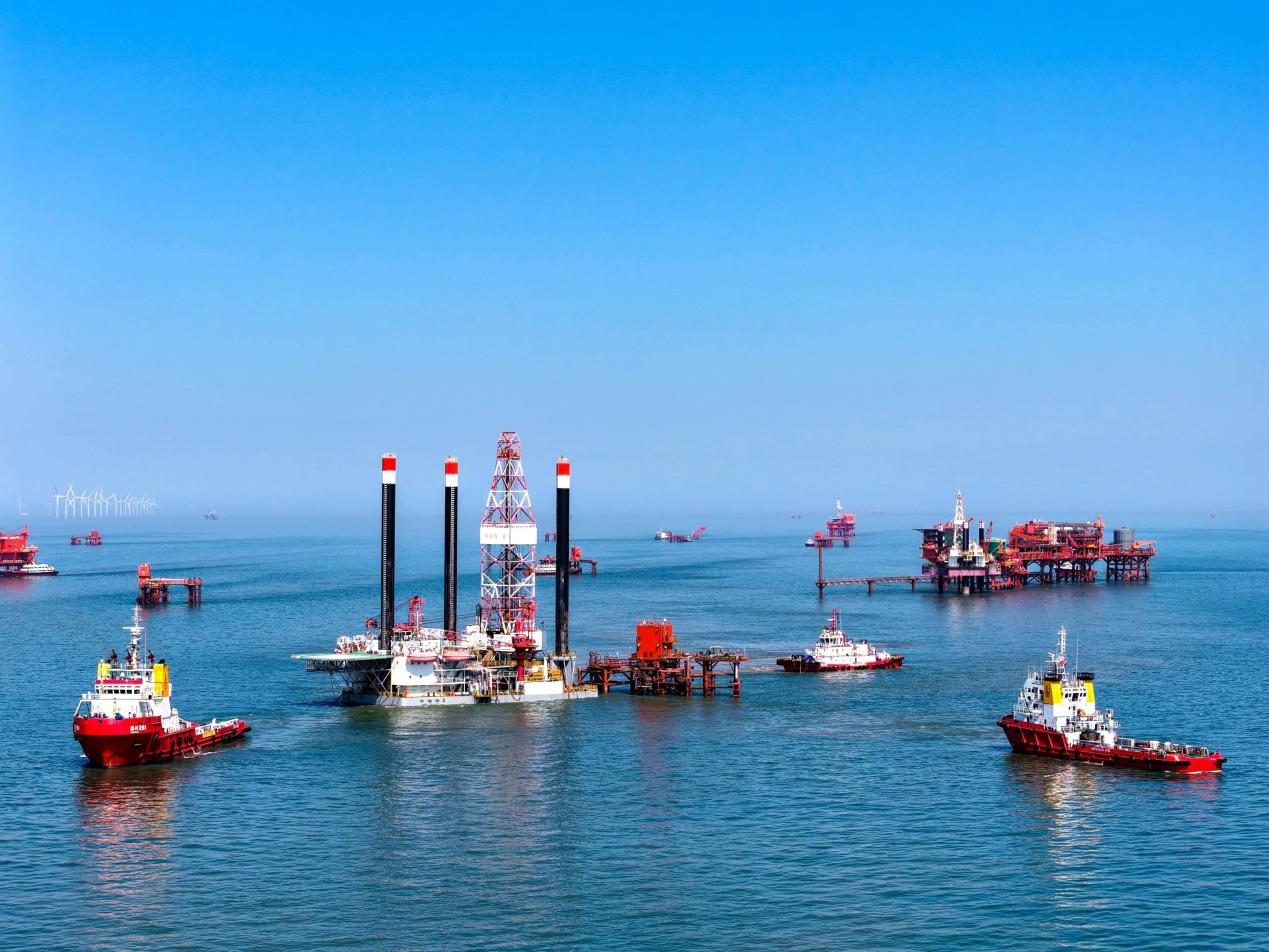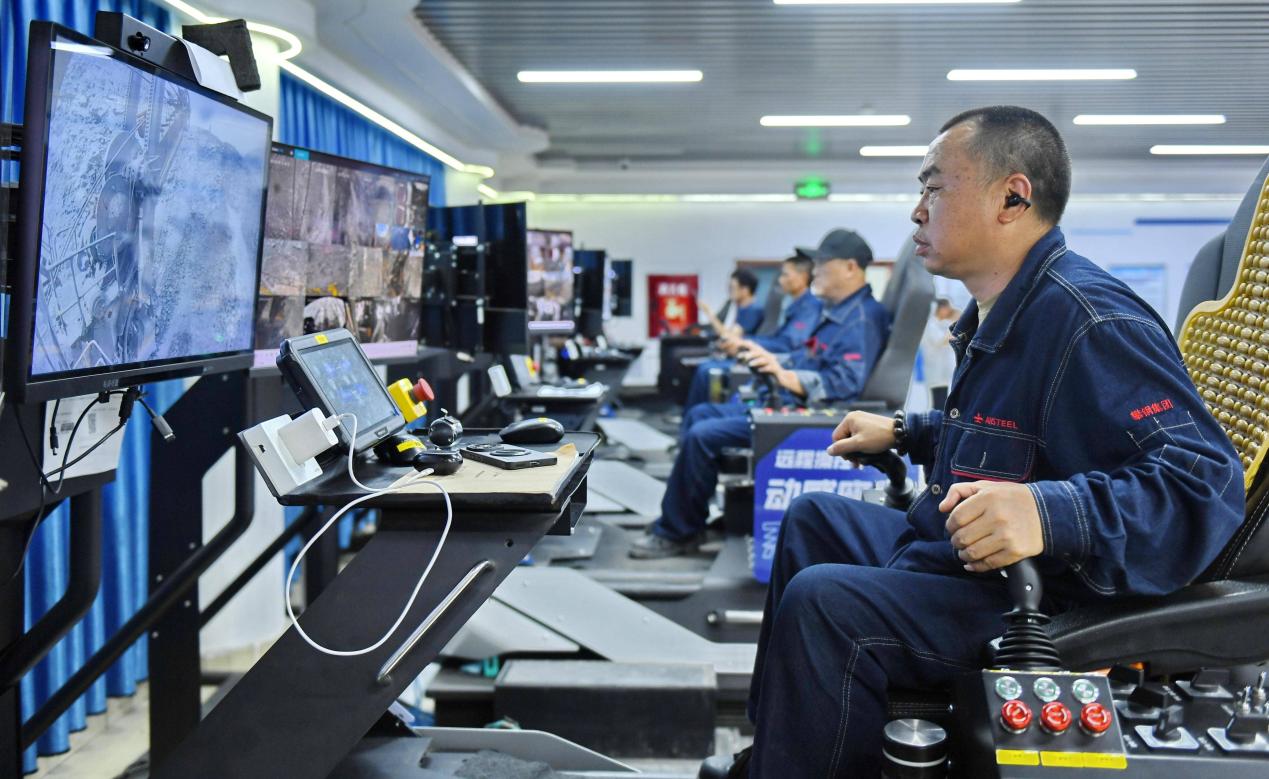




- BRNN
- BRI News
- BRNN News
- Database
Official Documents Polices and Regulations
Inter-government Documents International Cooperation BRI Countries
Business Guide Economic Data BRI Data
Trade
Investment Projects Latest projects
Cases - Content Pool

Photo shows an offshore oil and gas drilling platform in the waters near Dongying, east China's Shandong province. (Photo/Zhang Can)
China's mineral exploration efforts during the 14th Five-Year Plan period (2021-2025) yielded remarkable breakthroughs across diverse geological settings - from deep underground to high plateaus - resource types, spanning energy minerals to strategic emerging materials.
According to the Ministry of Natural Resources, non-oil and gas mineral exploration investment surged 23.9 percent year-on-year in the first half of 2025, accelerating the mapping of the nation's subsurface resources.
A landmark achievement of this period is the discovery of the 2,800-km "Asian Lithium Belt," stretching from Sichuan through the Qinghai-Xizang Plateau to Xinjiang. This find - combined with major deposits identified in Inner Mongolia and Hunan - has elevated China from the world's sixth-largest to second-largest holder of lithium reserves.
Technologically, China transitioned from reliance on foreign models to pioneering independent innovations. Aerial reconnaissance (drones, satellite remote sensing) proved highly effective in challenging terrains like Sichuan's Jiajika and the Xinjiang's West Kunlun. Meanwhile, subsurface detection (geogas surveys, lithium isotope tracing, high-density resistivity imaging) enabled precise drill-site targeting.

A geological researcher is on an ore prospecting mission in Huzhou, east China's Zhejiang province. (Photo/Yi Fan)
"A series of new technologies and methodologies have provided modern, multidimensional support for drilling projects," said an executive from the Institute of Mineral Resources at the Chinese Academy of Geological Sciences. "They have greatly improved the success rate of exploration, shortened exploration cycles, and reduced costs."
China's identified lithium oxide resources now stand at 17.5 times the national total two decades ago. "The discovery of the Asian Lithium Belt has not only strengthened China's resource base and supported the healthy and orderly growth of the lithium battery and new energy vehicle industries, but also spurred local economies, especially strategic emerging sectors, laying a solid foundation for regional economic transformation and upgrading," the executive added.
The breakthrough of the Asian Lithium Belt offers a vivid snapshot of China's flourishing mineral exploration landscape in recent years.
According to a report on mineral resources released by the Ministry of Natural Resources, China's investment in geological exploration reached 115.994 billion yuan ($16,339 billion) in 2024, marking four consecutive years of growth. During the 14th Five-Year Plan period, total prospecting investment has approached 450 billion yuan, with 150 new mineral deposits discovered nationwide.
Energy mineral security has continued to improve. Ten newly discovered oilfields each exceeding 100 million tons and 19 gas fields each with reserves over 100 billion cubic meters have pushed oil and gas reserves to record highs, supporting steady annual crude oil production of 200 million tons and natural gas output surpassing 240 billion cubic meters.
Five large uranium bases, including those in Xinjiang's Ili Kazak autonomous prefecture and Ordos in Inner Mongolia autonomous region, have seen their resource foundations strengthened. Ten new large uranium deposits were discovered, significantly enhancing China's uranium resource security.
Production and reserves of bulk minerals have also expanded notably. Major breakthroughs have been made in deep or peripheral exploration at long-established mining bases such as the Xiaoyi bauxite mine in Shanxi, the Duobaoshan copper mine in Heilongjiang, the Jiaodong gold mines, and the Anshan-Benxi iron mines in Liaoning, substantially extending mine lifespans.
Meanwhile, new mining bases continue to emerge: the Dadonggou gold deposit in Liaoning, for instance, has an estimated gold resource of nearly 1,500 tons and is expected to evolve into a world-class large-scale gold mine in the Bohai Rim region.
Significant progress has been made in discovering minerals vital to strategic emerging industries. "We leverage scientific innovation to overcome resource constraints. By advancing geological theories and breakthrough technologies, we underpin the growth of strategic emerging industries," said Xu Dachun, vice minister of Natural Resources.

Miners remotely control mining machinery via 5G network in a control room of a mining company in Panzhihua, southwest China's Sichuan province. (Photo/Li Xiangyu)
Take helium for example. Widely used in semiconductors and aerospace, helium was once almost entirely imported. Through technological breakthroughs in extracting helium from natural gas, China has achieved a major leap from zero to full-scale exploration and development, now capable of meeting core domestic demand.
Or take high-purity quartz, indispensable to semiconductor and photovoltaic manufacturing but previously heavily import-dependent. China has designated high-purity quartz as an independent mineral type and stepped up its exploration and development, discovering multiple deposits in Henan and Xinjiang. These findings are of great significance in safeguarding the security of China's high-tech industrial and supply chains.
"There's good news on rare earths, too," Xu added. "In the Bayan Obo mining area in Inner Mongolia, newly identified rare earth reserves have reached nearly 50 million tons, the largest rare earth discovery worldwide so far this century, further cementing China's position as the world's leading rare earth producer."

Tel:86-10-65363107, 86-10-65368220, 86-10-65363106